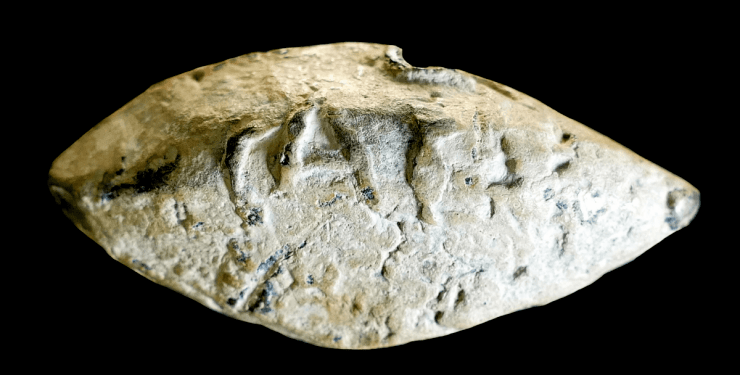This is the first time on the Iberian Peninsula that such a clear inscription of Caesar’s name has been found on a projectile type. Moreover, this is the first find of a sling ball with the name of any Roman city engraved from Spain.
Researchers have found an ancient artifact in Andalusia that connects Julius Caesar with the Ibero-Roman city of Ipsca. Researchers unearthed a lead ball with a sling, on which the abbreviated name of Gaius Julius Caesar, marked as CAES, is written along with the name of Ipsca, writes Arkeonews.
This is the first time on the Iberian Peninsula that such a clear inscription of Caesar’s name has been found on a projectile type. Moreover, this is the first find of a sling ball with the name of any Roman city engraved from Spain.
The discovery of this unique artefact was made possible thanks to a careful analysis carried out by experts from the Autonomous University of Madrid, from the Archaeological Museum of Cabra and from the Historical Museum of Baena.
This metal ball was found about 19 kilometers from Baena, in the countryside of Montilla, a region in southern Spain with a rich historical past. Montilla, a city with a population of about 23 thousand people, is located in the picturesque region of Andalusia.
It was here, according to some historians, that the decisive battle of Munda took place in 45 BC. This battle marked the final confrontation between Julius Caesar and Pompey’s surviving sons, Gnaeus and Sextus.
The exact location of the Battle of Munda has long been disputed, and one of the main contenders is Montilla itself. The discovery of the metal ball adds more evidence to the plausibility of the thorium and confirms Ipsca’s alliance with Caesar’s army.
The sling, a hand-held throwing weapon with a small pouch between two cords, became popular in ancient Greece and the Roman Empire. The Roman army, in particular, used slings and such metal balls as ammunition.
This find offers a fascinating insight into ancient military practices and further strengthens our understanding of the historical events surrounding Julius Caesar and the Roman presence in Spain.

